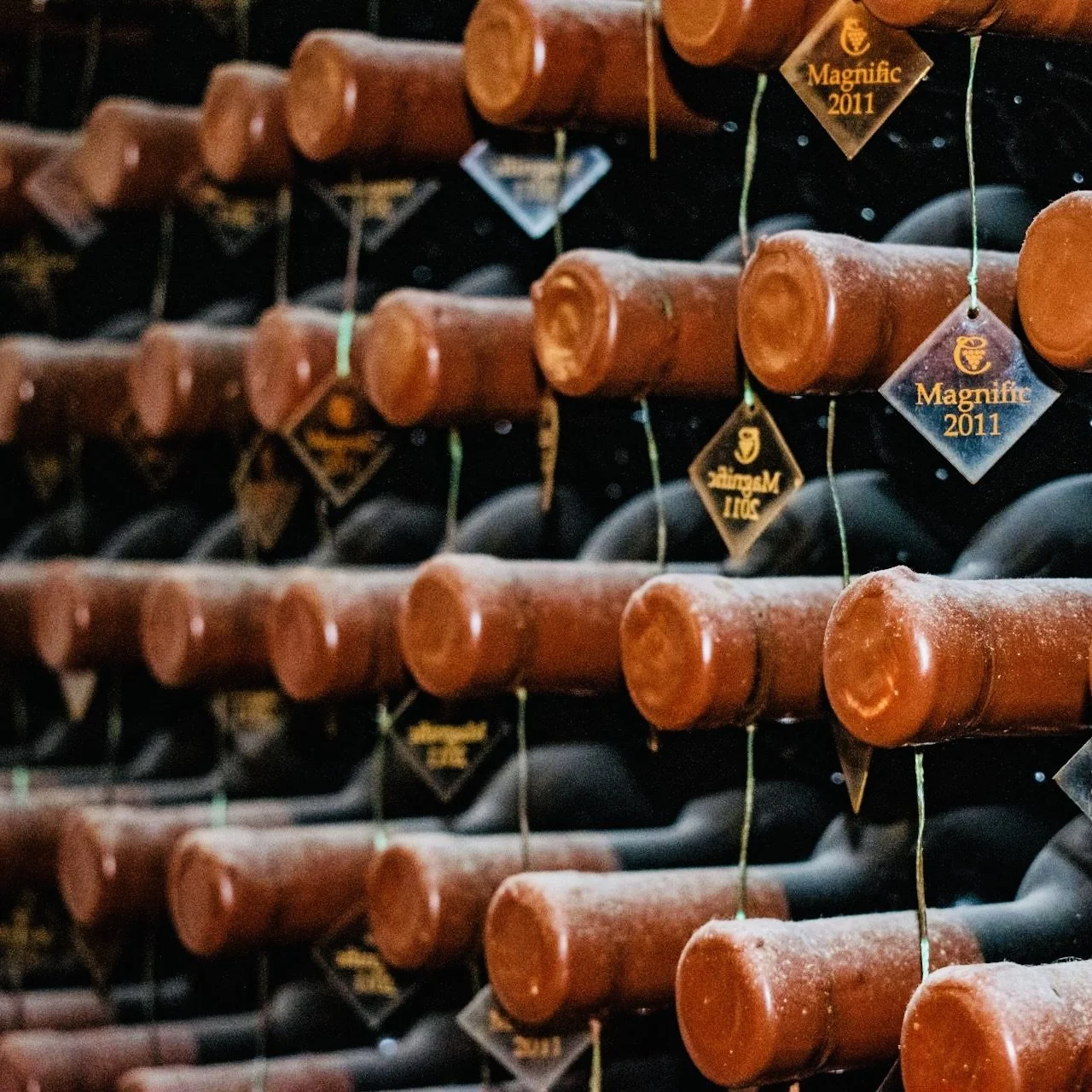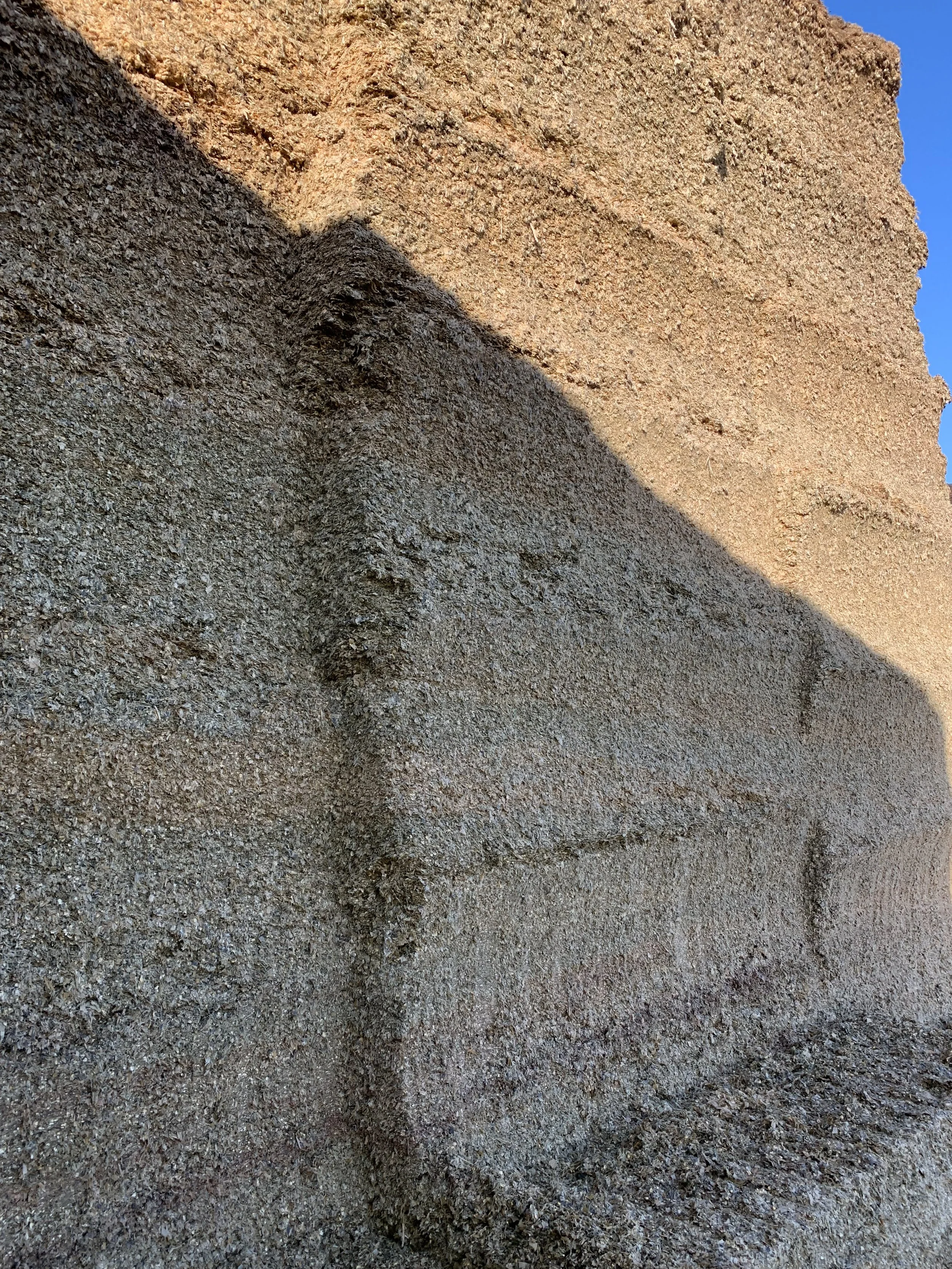Does maize silage improve with age?
Is silage like a good wine, does it improve with aging or is it best fed as soon as possible to retain as much “freshness” as possible, and does it just go off if it is kept too long? Well the aging of maize silage is a bit more like Goldilocks’ porridge than fine claret, it is at its best somewhere in the middle.
Some additive manufacturers make some pretty strong claims for their wonder products - “feed out after only 5 days” and the like. Is that realistic? Well yes you probably could if you really wanted to but why would you want to feed silage a week after you ensiled it?
I guess you might need to feed silage almost as soon as you have harvested it if you have run out of last years crop. In that case you might not have a choice and as long as the clamp has reached “stability” then there is not much risk to feeding out so soon. You might also face this situation if you only have access to one single maize clamp face and so you have to stop feeding maize once you harvest and ferment the next crop. This is because the clamp design is not optimised.
Do you need to design special maize clamps?
In many ways, designing a silage clamp to store forage maize is quite straight forward. In most parts of the world, maize, or corn, is a very seasonal crop with a relatively long growing season. This means the crop is all harvested over a fairly short time period. Unlike grass, that can be harvested multiple times (in the UK) from April until November, maize is usually cut once over a couple of months in the early autumn.
Claas Jaguar 1200 in maize silage
To design the optimum clamp layout for grass, you need to consider so many factors including housing period, calving pattern, climatic conditions, re-seeding policy, target dry matter… the list goes on and on. But with maize, it’s so much more simple, - how many tonnes are you making and what do you use to fill the clamp? That’s probably - actually it is definitely - too simplistic but in essence you make the maize silage in one hit and then feed it out over the housing period.
To produce a well designed maize clamp you need to think about that change over period between the old crop and the next one. You also need to consider the risk of a late harvest and making sure you have enough “old” crop to cover the gap. This all then leads on to the question about how long you want to store your maize?
How long should you store your maize?
The Goldilocks zone for maize silage age is probably much more important than it is for grass forage. This is because there are some actions going on within the fermented crop inside the clamp that are really beneficial to maize or corn silage.
When the crop hits the clamp, the fermentation is what it’s all about. There is loads about the fermentation process elsewhere on this site so I will skip on until we reach pH stability. This is the point where microbial activity just about ceases and the pH becomes stable. It’s important to get to this point quickly because all this microbial activity is fuelled by the very nutrients that you want to feed your cows or anaerobic digester. So the quicker it stops, the more fuel there is for you to use.
Even though pH stability has been reached, there are still some actions going on within the crop. In really high starch crops such as maize, the acid and enzymes within the forage start to break down the starch into more available sugars. This converts the starch energy into a more readily usable form without any significant loss.
How is protein affected by silage storage?
Proteins are also an important component of forage maize even if the crop is mostly chosen for its high energy content. But storing the maize silage for a longer period of time can help make more of the protein available to ruminant livestock as it too is broken down over time.
The fibrous elements are also modified by increased storage time. Storing silage for an increased period can allow some of the NDF to become “softened” which allows more of its energy to be extracted during digestion.
How long does it take for stored maize silage to improve?
We are dealing with biochemical processes here, so there are a lot of factors that contribute to what’s going on. It is also perhaps refreshing to learn that there is still an awful lot about these sorts of processes that we don’t yet understand. What we do know is temperature and moisture levels always have a big impact on these process outcomes.
Given all the right conditions, pH stability should be achieved 2 weeks after ensiling and the improvement phase for maize silage storage will continue for about 3 months. After this time there is (usually) very little improvement in the fed value.
How long should maize silage be stored before its fed out?
So if maize silage is “at its best” after 3 months, what is its “best before date”? Well this really depends on the storage conditions because unless you have stored silage in sealed conditions, it will spoil. If you get the storage correct, then it’s good for at least 9-15 months.
Now you need to consider how long you want to store the silage because building clamps isn’t cheap. If you are always going to be carrying 3 or 4 months more silage than you use each year, you have to have enough clamp space for this. You can calculate how much it costs to store your silage, but does keeping maize for longer make any financial sense?
How much extra feed value do you get from storing maize silage for longer?
I guess this is the million dollar question because, yet again, we are dealing with biochemical processes so there are no guaranteed outcomes. In trials, there have been clearly demonstrated gains in ME of around 1MJ/kg DM in maize silage stored for more than 3 months compared to the same silage as a “fresh crop”.
To put some value to this you need to consider what it would cost to replace this energy from another form. In the UK at the time of writing, a mega joule of energy from feed wheat is costing around 1.785p, but buy that from a feed compounder this probably more like 2.3p per MJ
Is it worth storing maize for longer?
So just for ease of numbers I will assume you are storing 1,000t of 11ME maize silage. By increasing the minimum storage period to 3 months, you should have an increase of around 1 mega joule of energy - but only for the first 3 months of the year. After that, all the silage will be more than 3 months old anyway so there isn't a year long advantage.
This extra 1 MJ of energy would cost you between £1,560 and £2,000 a year to replace with energy from wheat. To produce a “breakeven” figure you would need to be able to provide the extra clamp space at around £6.25 to £8.00 per tonne per year. Or to think of it another way, if increasing your clamp space by 250 tonnes costs you £18,000 then the payback period is around 9 to 11.5 years.
These numbers may, or may not, impress you but what you also need to remember is that there are some other benefits from longer term storage. By consistently feeding “aged silage” you eliminate the diet shock that often occurs when you change the makeup of a TMR. And you also get a protein benefit too. Along with these dietary factors, you also get some insurance. A little bit of silage carry over cover to help with a late harvest or the field you didn’t get to because the weather gods just didn’t play ball. There is plenty to think about.
If you want to discuss the best way to store your maize silage or would like to discuss any other aspects covered in this series, contact me at jeremy@silageconsultant.co.uk


